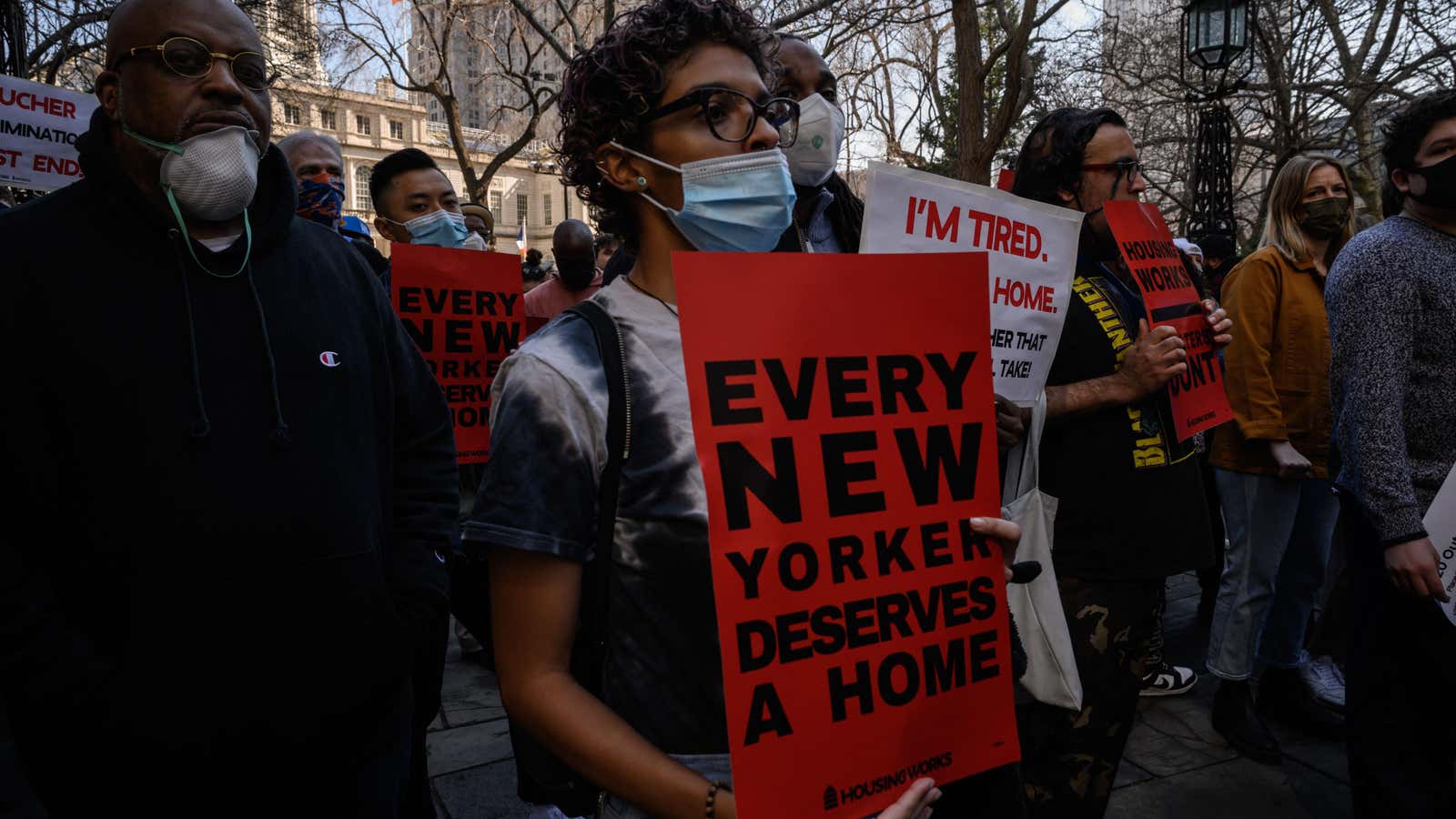Decades of research have shown that the main driver of homelessness is a lack of affordable housing, and that mental health issues or substance abuse play more marginal roles in it. So why is New York City mayor Eric Adams embarking on a strategy to forcibly hospitalize homeless people?
The new policy gives police and first responders the power to hospitalize anyone who is believed to be unable to take care of themselves, whether they are violent or not.
Advocates for the homeless, mental health professionals, and human rights experts have condemned the policy, which according to the New York Civil Liberties Union likely violates New York state laws. But beyond its moral and legal shortcomings, the plan has another issue: It is a waste of taxpayer money.
Delaying a better solution to homelessness
According to the Coalition for the Homeless, more than 60,000 people sleep in shelters in New York City on any given night. That is 50% more than a decade ago.
Hospitalizations wouldn’t change that. Unless kept in hospitals against their will and at exorbitant costs indefinitely—an unlikely scenario given the tight capacity of city hospitals—homeless people affected by the new policy will at some point be sent back into the streets. “Many homeless people...have spent time in hospitals and other emergency services that have failed them; they might be hospitalized for a few days but then where do they go after that?” says Laura Grund of Harlem United, a New York City-based organization providing housing support to the homeless.
It’s possible people released from forced hospitalizations will end up coerced into care again. But this does nothing but delay effective interventions while wasting resources that could fund the easiest, and most obvious solution: housing.
Homes are the cheapest solution to homelessness
The cost of efforts to fight homelessness is inversely proportional to how effective they are. Providing supportive and affordable housing is much cheaper than operating emergency shelters, which in turn are much cheaper than hospitalizing people.
According to the NYC Independent Budget Office, emergency shelters cost $138 a day on average for single adults, or more than $50,000 a year. Supportive housing—a form of affordable housing in which the tenant is charged a subsidized rent—costs between $25,000 and $36,000 per person per year, according to figures shared with Quartz by the Supportive Housing Network of New York.
Cost estimates for a forced night in hospital, meanwhile, range from about $1,100 to more than $3,000, equal to an annual expense of $400,000 to $1.1 million per person. And that’s before accounting for the associated law enforcement expenses.
What about mental health?
Secure housing also reduces the use of mental health and hospital services.
A 2014 New York City study (pdf) found that use of health services—from emergency room attendance, to substance abuse services, to psychiatric hospitalization—went down between 32% and 48% among homeless people after they had been in permanent housing for a year. This saved taxpayers an average of $10,000 per placed person (pdf, p.9), and nearly $80,000 (pdf, p. 11) for every homeless person who was relocated from psychiatric care into a home.
The findings suggest forced hospitalizations, beyond the human rights questions they raise, are not an efficient solution.
“It’s unfortunate that this is where the conversation is going rather than talking about community support, particularly the expansion of supportive housing,” says Grund. “This administration has been focused on supportive housing to some extent...but I think there could be a bigger emphasis on housing models as a way to make a dent in the street homeless population.”
